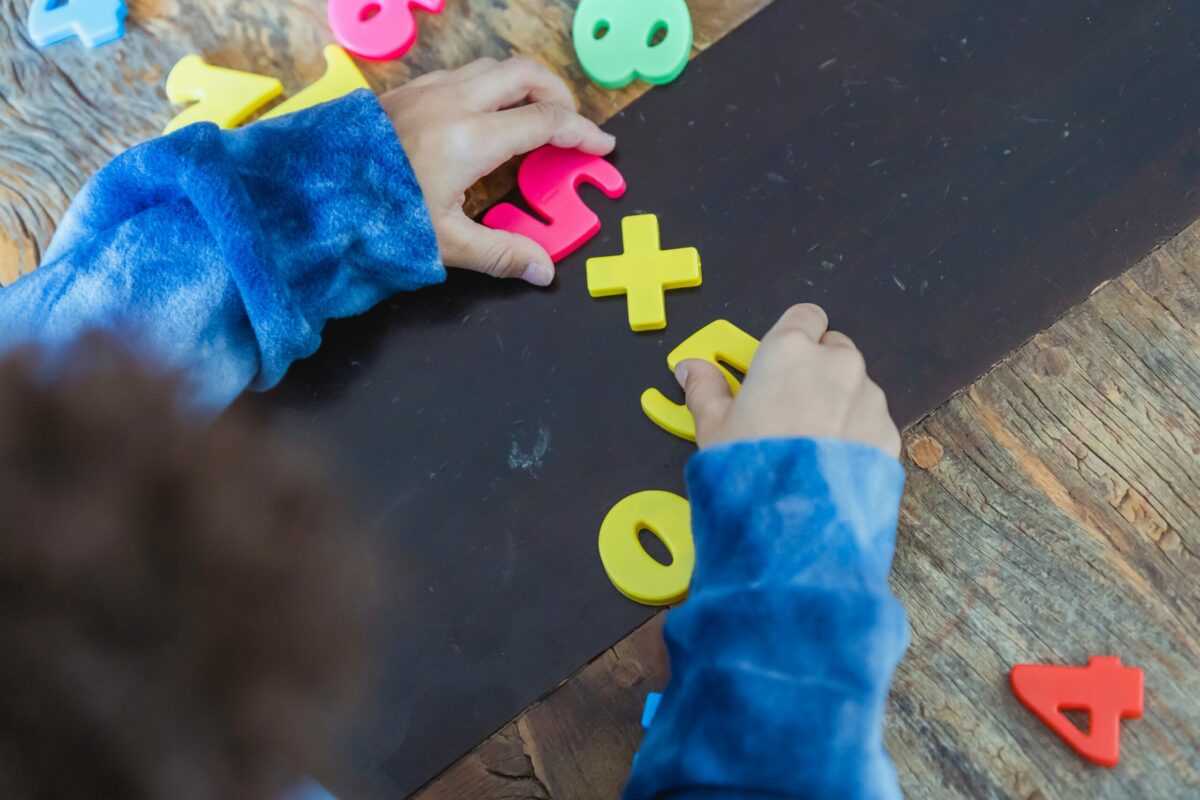Is the child dyscalculic or is mathematics difficult for them because of the stress? Or maybe there is an even different reason? Let us dive into the characteristics of dyscalculia and math anxiety so that we can help you find the answer.
Where do math difficulties come from?
To fully benefit from a traditional math lesson at school, a child has to have a lot of skills. They must be able to sit straight and pay attention for almost an hour, read the exercise and understand it, correctly rewrite the numbers from the whiteboard… Having high calculating skills is only one of the aspects affecting performance in mathematics. That is why it is impossible to indicate only one or two universal sources of math difficulties.
However, when mathematics is particularly difficult for a student, math anxiety and dyscalculia are probably the most popularly discussed reasons. In theory, those two concepts are very different, but in practice distinguishing between them can be difficult. Having objective difficulties in understanding math can lead to fear of it. At the same time, years of avoiding exercises because of math anxiety often result in problems piling up, so that they resemble the effects of dyscalculia. To properly differentiate between dyscalculia and math anxiety, it is necessary to get to know the definitions of both of them.
What is maths anxiety?
Mathematics is arguably the most feared school subject. Students often associate it with low grades, strict teachers, and impossible-to-understand concepts. As a result, they develop an irrational fear of mathematics. Students with math anxiety feel immediate stress when they are to solve an exercise involving counting. They expect the task to be difficult as soon as they see it includes some numbers.
Data from the Program for International Student Assessment (PISA) shows that math anxiety is negatively related to math performance. It impacts not only students’ motivation to learn, but their working memory as well. People experiencing math anxiety find it difficult to concentrate and make mental operations on numbers. Because of that, they often make mistakes, which strengthens their belief that they will never be good at mathematics.
One of the most characteristic signs that struggles with learning come from anxiety is when a pupil cannot do math exercises at school, but they deal with the same operations disguised as something else, i.e. a game or everyday life problem. Another symptom is the fear connected with doing calculations, appearing not only during the tests but every time a person has to solve a problem associated with mathematics.
What is dyscalculia?
Another reason why a student might struggle with mathematics is dyscalculia – a Specific Learning Disorder that can affect all the aspects of basic numeracy. Differently from the ones with math anxiety, not all of the dyscalculic students fear mathematics, but even pupils with the most positive approach find it hard to understand and learn it.
Dyscalculia is something different from the problems caused by lacking knowledge. It happens that a student without SLDs falls behind their peers (for example because of lacking motivation or competent teachers) but they usually are able to get better over time, if their situation changes. Meanwhile, the problems caused by dyscalculia are long-lasting. The disorder does not only affect the current skills of the person in question but most importantly their ability to learn.
People with dyscalculia have various problems with using numbers and counting. A popular example is not understanding why 10 is more than 1 if zero means nothing. Learning logical concepts, like Pythagoras’ principle, can be difficult for them as well. Some researchers point out that dyscalculic people need to understand and visualize every aspect of a mathematical rule before they start using it. That is one of the reasons, why they struggle at schools, where it is often necessary to quickly memorize the material.
It is impossible to stop being dyscalculic, but with competent care and training, most people are able to improve their skills. Strategies like giving students additional time to learn basic concepts and using concrete examples as often as possible proved themselves to be useful in dealing with dyscalculia. That is why it is so important to diagnose children with math difficulties and introduce specific facilitations.
To conclude
However it is always good to educate yourself about the possible sources of math difficulties, it is also important to stress that the final diagnosis always has to be made by a specialist. There is rarely only one reason for mathematical difficulties. Dyscalculia often combines with other SLDs and mathematical anxiety. Other characteristics, like ADHD, can also affect math performance, not to mention that the difficulties can be caused by physical problems, i.e. undiagnosed vision impairment.
Recognizing specific kinds of difficulties is not always easy, but there are some facilitations that help most of the students. If you want to learn more about how to help pupils struggling with math, check out Calculate. Our project aims to promote effective methods of teaching mathematics and raise awareness about dyscalculia. There is new information on the project coming out soon, so stay tuned!
Reference:
Foley, A. E., Herts, J. B., Borgonovi, F., Guerriero, S., Levine, S. C., & Beilock, S. L. (2017). The Math Anxiety-Performance Link. Current Directions in Psychological Science, 26(1), 52–58.

